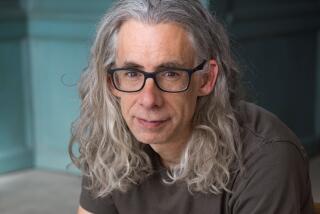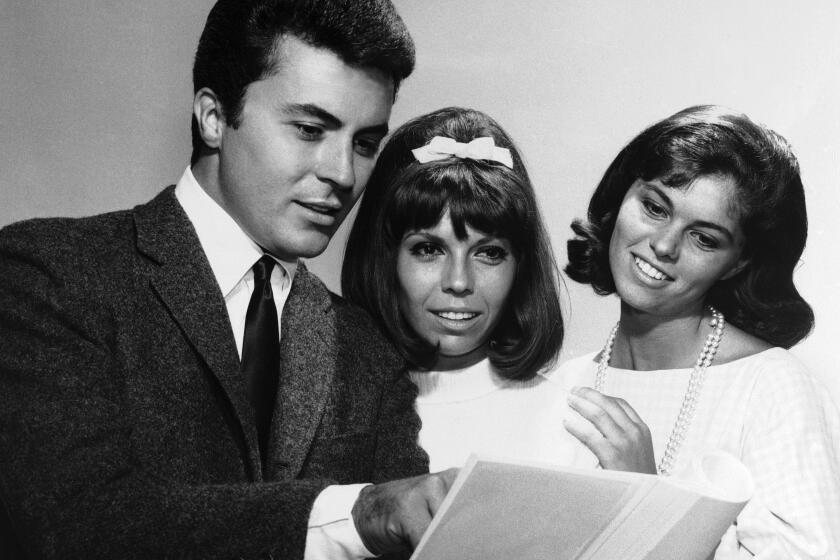Fanatics and a forgotten massacre
Depending upon which version of history you believe, the terrible events of Sept. 11 -- the wholesale massacre of innocent victims -- can be explained as either an act of war or the result of religious fanaticism taken to a horrible extreme.
But some might call it the “other” 9/11. On that day in 1857, in a remote quadrant of southeastern Utah territory, a wagon train consisting of 140 homesteaders -- men, women and children striking west for California from Arkansas -- were gunned down, bludgeoned and stabbed to death in an attack attributed to local Mormon militia.
Approaching the 150th anniversary of the Mountain Meadows Massacre, as this marginalized chapter of U.S. history has come to be known, modern Mormons in the Church of Jesus Christ of Latter-Day Saints continue to struggle with its legacy. But “September Dawn,” an independently financed historical drama that arrives in 1,000 theaters Friday, takes a critical view of the religious fundamentalism it presents as having precipitated the attack -- most controversially, the alleged influence of the Mormon leader referred to as the “American Moses,” Brigham Young.
The movie, originally set for release in May, has reportedly prompted hand-wringing in the Mormon community, where some worry it will perpetuate outdated notions about the homegrown American religion, arriving as former Massachusetts Gov. Mitt Romney, who is Mormon, strenuously campaigns to win the Republican Party’s presidential nomination. (A spokeswoman for the church declined to comment about the movie.)
Co-writer-director of “September Dawn” Christopher Cain dismisses the idea the movie puts a bad light on Mormonism, correlating the religious zealotry the film depicts with the clash of cultures that has led to America’s “war on terror” and twin wars in Iraq and Afghanistan.
“I don’t have an agenda with the Mormon Church,” Cain said. “What I do have is a theoretical view of how we can look at what’s happening today.”
“We live in a time where the news is dominated by the religious, fanatical world -- a time where a 20-year-old kid with his whole life ahead of him can walk onto a bus and blow himself up and war is being waged by a bunch of nut-cases ‘over there.’ Well, it happened here 150 years ago. I just saw this [movie] as an opportunity to look at how this happened in our own backyard -- and not that long ago.”
Pioneers in peril
“September Dawn” opens with former Arkansas militiaman Capt. Alexander Fancher (played by Shaun Johnston) leading a wagon train through rural Utah toward the gold-rich West Coast. They make camp, intending to rest for a few days but are met with deep suspicion by locals.
Terence Stamp portrays Young as a territorial governor who declares martial law and warns church members to turn away any “Gentiles” who stray into Mormon territory: “If any miserable scoundrels come here, cut their throats,” Young is recorded as having said in a sermon, his siege mentality a holdover from earlier persecution and the murder of Mormon prophet Joseph Smith in 1844.
Mormon Bishop Jacob Samuelson (played by Jon Voight) permits the wagon train a two-week grace period in Mountain Meadows but instructs his son to spy on them.
The movie’s central narrative, a Romeo and Juliet-style romance between the Mormon boy and a homesteader girl, accounts for most of the action leading to its heart-rending climax -- an attack the movie portrays as having begun as a siege by Paiute Indians in cahoots with the Mormon on Sept. 7 and finished four days later: The Fancher party was offered a truce, but every homesteader older than 6 was ultimately shot at point-blank range.
According to Tom Kimball, a sixth-generation Mormon who is book review editor for the Mormon History Assn., the film has been put on a “do not watch” list by LDS Church officials.
“It’s blacklisted already,” he said.
Nonetheless, Kimball said the Mountain Meadows Massacre has been the subject of intensive discussions this year. In May, the association held a conference hosting more than 800 Mormon scholars at which the massacre was Topic A.
“Here’s what’s not in dispute: There was a siege, on the 11th the Fanchers were offered a negotiation, and when they accepted it, they were walked off and shot,” Kimball said. “What’s in dispute is why and who ordered it. Some people are pointing the finger at the Fanchers and the Indians.”
Most church-sanctioned histories portray the Mountain Meadows Massacre as a war crime -- an overreaction to intruders they perceived as a threat to Mormon sovereignty. Others say the motive was economic: a chance to loot the wagon train.
In the September issue of Ensign, an official magazine of the LDS Church, historian Richard E. Turley Jr. writes of “disagreements, miscommunication, prejudices and political wrangling” that had created a divide between the Mormon territory and the federal government leading to the Utah War in 1858. He sets the scene for the attack on the Fancher party as coming during a time of high tension amid the government’s decision to send “an army to put down perceived treason in Utah” and the Saints’ fears that soldiers would be arriving at any time to “to oppress, drive, or even destroy them.”
The movie, however, puts the blame squarely on Young. He is heard in voice-over by Stamp, cursing Gentiles, encouraging vengeance, “blood atonement” and “avenging the blood of the prophet” among other exhortations.
“All Brigham Young’s dialogue was taken directly from speeches and documents,” said Cain. “You heard words like ‘blood atonement.’ These are religious terms, not self-preservation terms. Religious connotations and terminology were being used to fire their people up.”
Will Bagley, author of the controversial award-winning book “Blood of the Prophets: Brigham Young and the Mountain Meadows Massacre,” feels the depiction is accurate, citing the script’s reliance on the “Life and Confessions of John D. Lee,” written by Young’s trusted lieutenant, who was the only person convicted in connection with the attack.
Lee (who appears as a deeply conflicted character in “September Dawn”) was executed in 1877, claiming to the end that he was being unfairly led to his death -- “sacrificed in a cowardly, dastardly manner” -- and insisting that it was Young who had ordered the attack.
“The movie is about the consequences of fanaticism,” Bagley said. “Historians will argue about what caused the Mountain Meadows Massacre. But I think it’s a dodge to say it wasn’t a religiously motivated act. Like all acts of vengeance, it was pointless, cruel and self-destructive.”
For Patty Norris, president of the Mountain Meadows Massacre Descendants and a direct descendant of Capt. Fancher, “September Dawn” is a form of redemption, righting historical misconceptions that the homesteaders were aggressors rather than victims.
“The Mormons have historically tried to excuse their actions after the fact,” Norris said. “And the people of Utah have misunderstood the Fancher Party. Some people have said, ‘They got what they deserved. They were horrible people.’ ”
“So I’m thrilled there finally has been a movie made. It needs to be told that the people on the wagon train were good people, totally unaware about what they were facing.”
For his part, Voight was drawn to his role -- a man of the cloth whose deep piety results in mass murder, carried out in part by his own son -- as a means of addressing what he sees as a pressing issue.
“I’m not one who goes looking for those references, but it is a chilling irony that this happened 150 years ago on Sept. 11,” Voight said.
“This film is obviously very relevant today in terms of what we’re faced with: religious fanaticism endangering all democracy. It’s our own history, and I hadn’t known it before.”
--
More to Read
Only good movies
Get the Indie Focus newsletter, Mark Olsen's weekly guide to the world of cinema.
You may occasionally receive promotional content from the Los Angeles Times.











